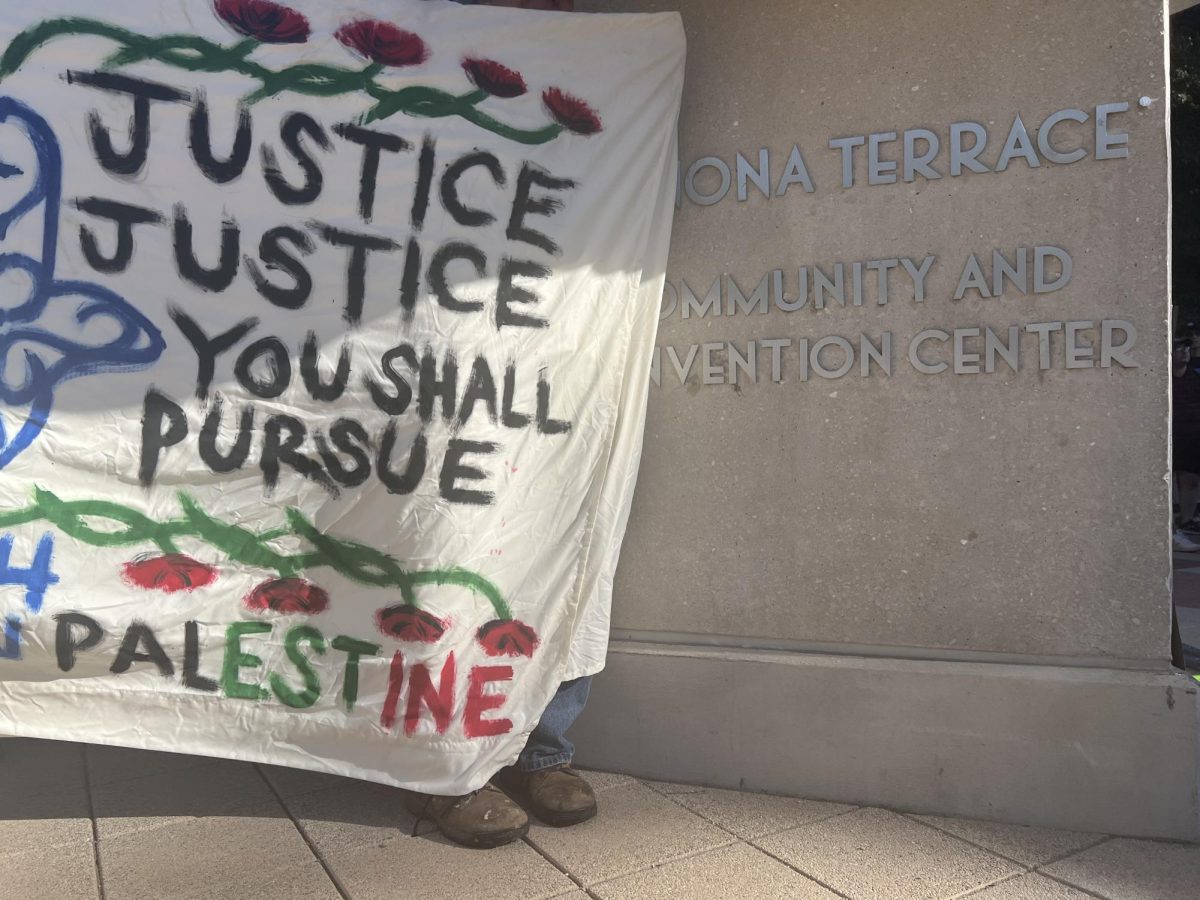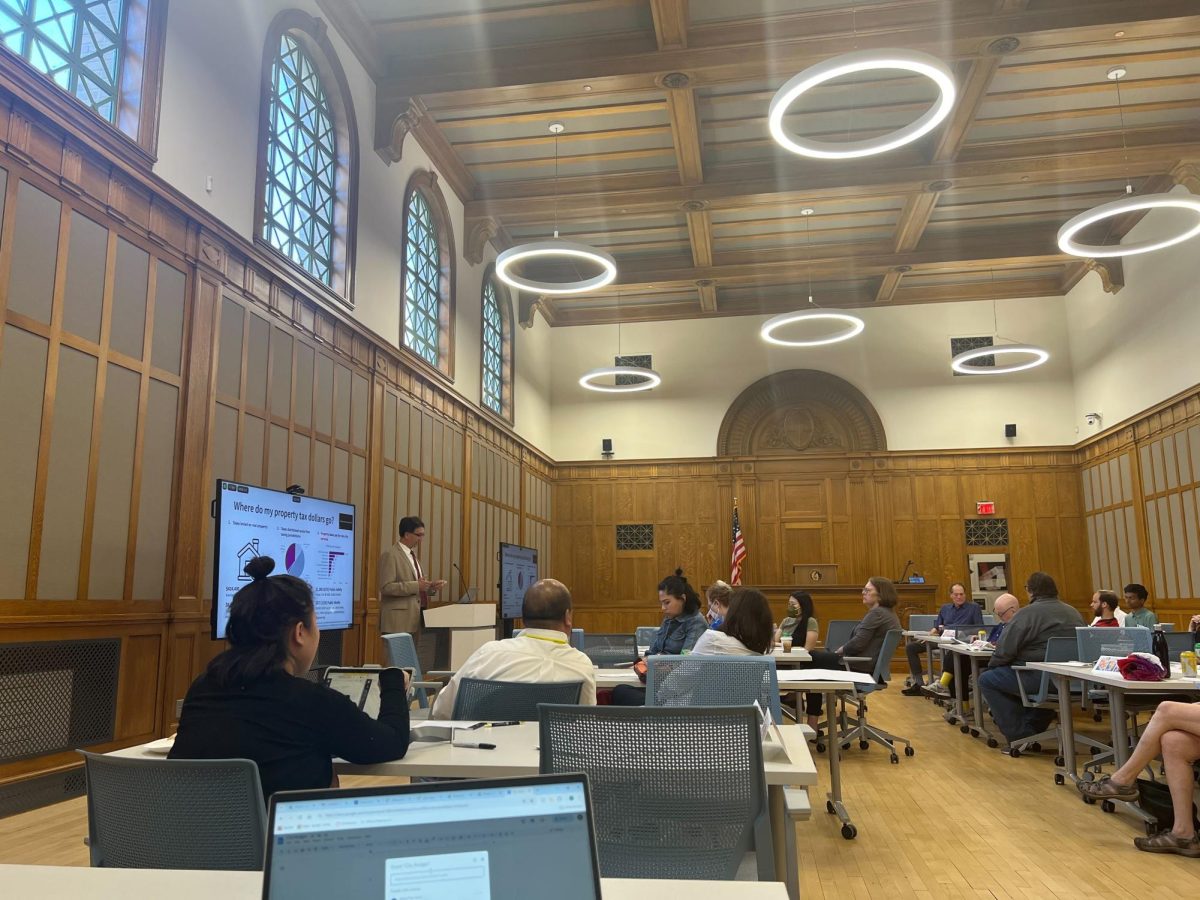To combat the rising number of domestic violence homicides, victims of domestic abuse and family members shared their stories and recognized lost loved ones at the 10th annual Purple Ribbon Walk.
According to the 2015 Wisconsin Domestic Violence Homicide Report, instances of domestic violence homicides have increased and are set to reach a high-water mark in Wisconsin.
In the last year, 58 people lost their lives to domestic abuse in Wisconsin, a significant rise from the 43 deaths reported in 2014.
Jill Karofsky, executive director of the Wisconsin Department of Justice Office of Crime Victim Services, said Wisconsin is on pace to have possibly over 80 domestic homicides this year.
“That is not okay,” Karofsky said. “That has got to be a call to action for each and every one of us.”
End Domestic Abuse Wisconsin is the leading statewide voice for victims of domestic violence. In the 16 years the group has been putting together an annual report, domestic violence homicides have occurred nearly once a week on average in Wisconsin.
Executive Director Patti Seger of End Domestic Abuse Wisconsin and Zonta Club of Madison President Nancy McCulley orchestrated the event to raise awareness but also to remember those who lost their lives this year by reading their names out loud.
“It’s our hope … that we will be able to not just walk in silent remembrance, but we will be also able to leave the walk today feeling the ripple of loss in our collective consciousness,” McCulley said.
Domestic violence persists quietly, despite increased awareness, resources
McCulley said one goal of the report is to present a more holistic picture of domestic abuse in Wisconsin rather than a “scattered set of violent episodes.”
The victims’ ages ranged from 92 years old to 2 months old. The report also shows perpetrators of domestic violence were predominantly male at 73 percent.
National domestic violence rates have been dropping for all race and gender groups for the past thirty years, according to the Bureau of Justice Statistics.
McCulley said she hopes reports like this will ultimately prevent domestic violence homicides by helping people recognize the risk factors associated with lethal violence, such as threats or use of a weapon, threats to kill, stalking, strangulation, obsessive jealousy and sexual assault.
Dane County Sheriff David Mahoney recalled his years working as a domestic violence detective to sympathize with the affected families, children and communities.
“It’s through this recognition of violence against women that there’s hope that we can bring an end to this tragedy,” Mahoney said.
Family members later shared their stories, including domestic abuse survivor Jennifer Warrington. Ten years ago, her abusive former partner killed her 2-year-old son. She said she hopes sharing her story will help spread the message that victims of abuse do not have to continue suffering in an abusive environment.

Warrington went into foster care at 2 years old and lived a childhood with recurrent emotional and sexual abuse.
“In a lot of cases, people are creatures of habit,” Warrington said. “What you see and what you learn growing up becomes the normal for you. I learned that abusive relationships were normal, and that’s what I thought was love.”
She had a son named Giavonni at 18 years old. Her significant other became abusive, so she moved in with family to give her son a childhood without abuse.
Not even her closest friends and family truly knew what was going on as she became more isolated. To this day, Warrington has scars on her legs from the extreme abuse.
She said she was in denial for a long time because they would go through a “honeymoon phase” of him being kind and caring after hurting her. These moments made the abuse even harder to see.
After she left him, her partner beat her son to death as a form of revenge. Warrington drew from this tragedy the knowledge to help empower other women in abusive relationships who might feel compelled to hide.
She said events like the Ribbon Walk help people realize there are places to go, such as domestic violence shelters, where victims can find help at every step of leaving an abusive environment. Her main reason for not leaving sooner was getting stuck at the front door.
“Abuse thrives only in silence,” Warrington said. “Talk about it with your friends. Talk about it with your family. Recognize the early signs of domestic violence and conscientiously intervene when possible.”
State organization gives grants to fund special needs housing projects in Madison
Anyone can become a victim of domestic violence, Mahoney said. He said one in three women will be abused in their lifetime.
He encouraged everyone to be aware and notify police of suspected violence. In particular, he hopes victims will reach out to both law and intervention services.


















